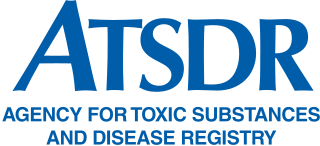
A disaster is a serious disruption, occurring over a relatively short time, of the functioning of a community or a society involving widespread human, material, economic or environmental loss and impacts, which exceeds the ability of the affected community or society to cope using its own resources.

Information science is a field primarily concerned with the analysis, collection, classification, manipulation, storage, retrieval, movement, dissemination, and protection of information. Practitioners within and outside the field study application and usage of knowledge in organizations along with the interaction between people, organizations, and any existing information systems with the aim of creating, replacing, improving, or understanding information systems. Historically, information science is associated with computer science, psychology, and technology. However, information science also incorporates aspects of diverse fields such as archival science, cognitive science, commerce, law, linguistics, museology, management, mathematics, philosophy, public policy, and social sciences.

Environmental health is the branch of public health concerned with all aspects of the natural and built environment affecting human health. Environmental health is focused on the natural and built environments for the benefit of human health. The major subdisciplines of environmental health are: environmental science; environmental and occupational medicine, toxicology and epidemiology.

The Agency for Toxic Substances and Disease Registry (ATSDR) is a federal public health agency within the United States Department of Health and Human Services. The agency focuses on minimizing human health risks associated with exposure to hazardous substances. It works closely with other federal, state, and local agencies; tribal governments; local communities; and healthcare providers. Its mission is to "Serve the public through responsive public health actions to promote healthy and safe environments and prevent harmful exposures." ATSDR was created as an advisory, nonregulatory agency by the Superfund legislation and was formally organized in 1985.
Crisis management is the process by which an organization deals with a disruptive and unexpected event that threatens to harm the organization or its stakeholders. The study of crisis management originated with large-scale industrial and environmental disasters in the 1980s. It is considered to be the most important process in public relations.

Health informatics is information engineering applied to the field of health care, essentially the management and use of patient healthcare information. It is a multidisciplinary field that uses health information technology (HIT) to improve health care via any combination of higher quality, higher efficiency, and new opportunities. The disciplines involved include information science, computer science, social science, behavioral science, management science, and others. The NLM defines health informatics as "the interdisciplinary study of the design, development, adoption and application of IT-based innovations in healthcare services delivery, management and planning". It deals with the resources, devices, and methods required to optimize the acquisition, storage, retrieval, and use of information in health and bio-medicine. Health informatics tools include computers, clinical guidelines, formal medical terminologies, and information and communication systems, among others. It is applied to the areas of nursing, clinical medicine, dentistry, pharmacy, public health, occupational therapy, physical therapy, biomedical research, and alternative medicine, all of which are designed to improve the overall of effectiveness of patient care delivery by ensuring that the data generated is of a high quality.
Community informatics (CI) is an interdisciplinary field that is concerned with using information and communication technology (ICT) to empower members of communities and support their social, cultural, and economic development. Community informatics may contribute to enhancing democracy, supporting the development of social capital, and building well connected communities; moreover, it is probable that such similar actions may let people experience new positive social change. In community informatics, there are several considerations which are the social context, shared values, distinct processes that are taken by members in a community, and social and technical systems. It is formally located as an academic discipline within a variety of academic faculties including information science, information systems, computer science, planning, development studies, and library science among others and draws on insights on community development from a range of backgrounds and disciplines. It is an interdisciplinary approach interested in using ICTs for different forms of community action, as distinct from pure academic study about ICT effects.
Emergency management is the organization and management of the resources and responsibilities for dealing with all humanitarian aspects of emergencies. The aim is to reduce the harmful effects of all hazards, including disasters.
A chemical disaster is the unintentional release of one or more hazardous substances which could harm human health or the environment. Chemical hazards are systems where chemical accidents could occur under certain circumstances. Such events include fires, explosions, leakages or release of toxic or hazardous materials that can cause people illness, injury, or disability.
Disaster response is the second phase of the disaster management cycle. It consists of a number of elements, for example; warning/evacuation, search and rescue, providing immediate assistance, assessing damage, continuing assistance and the immediate restoration or construction of infrastructure .The aim of emergency response is to provide immediate assistance to maintain life, improve health and support the morale of the affected population. Such assistance may range from providing specific but limited aid, such as assisting refugees with transport, temporary shelter, and food, to establishing semi-permanent settlement in camps and other locations. It also may involve initial repairs to damaged or diversion to infrastructure.
The University of MichiganSchool of Information (UMSI) or iSchool in Ann Arbor is a graduate school offering baccalaureate, magisterial, and doctoral degrees in informatics and information science.
Public health informatics has been defined as the systematic application of information and computer science and technology to public health practice, research, and learning. It is one of the subdomains of health informatics.
Paramedicine is the unique domain of practice that represents the intersection of health care, public health, and public safety. While discussed for many years, the concept of paramedicine was first formally described in the EMS Agenda for the Future. Paramedicine represents an expansion of the traditional notion of emergency medical services as simply an emergency response system. Paramedicine is the totality of the roles and responsibilities of individuals trained and credentialed as EMS practitioners. These practitioners have been referred to as various levels of Emergency Medical Technician (EMTs). In the United States paramedics represent the highest practitioner level in this domain. Additional practitioner levels in this domain within the U.S. include Emergency Medical Responders (EMRs), Emergency Medical Technicians (EMTs) and Advanced Emergency Medical Technicians (AEMTs).
The Centre for Research on the Epidemiology of Disasters (CRED) is a research unit of the University of Louvain (UCLouvain). It is situated at the School of Public Health of UCLouvain Brussels Woluwe campus of the university.

West Bengal State University (WBSU) is a public university situated in Berunanpukuria, 7 km off from Barasat city(the district headquarters of North 24 Parganas), Kolkata, North 24 Paraganas, West Bengal, India.
Informatics is a branch of information engineering. It involves the practice of information processing and the engineering of information systems, and as an academic field it is an applied form of information science. The field considers the interaction between humans and information alongside the construction of interfaces, organisations, technologies and systems. As such, the field of informatics has great breadth and encompasses many subspecialties, including disciplines of computer science, information systems, information technology and statistics. Since the advent of computers, individuals and organizations increasingly process information digitally. This has led to the study of informatics with computational, mathematical, biological, cognitive and social aspects, including study of the social impact of information technologies.

The Pandemic and All-Hazards Preparedness Reauthorization Act of 2013 is a law enacted by the 113th United States Congress. The Act amends the Public Health Service Act in order to extend, fund, and improve several programs designed to prepare the United States and health professionals in the event of a pandemic, epidemic, or biological, chemical, radiological, or nuclear accident or attack. The Act clarifies the authority of different American officials, makes it easier to temporarily reassign personnel to respond to emergency situations, and alters the process for testing and producing medical countermeasures. The Act is focused on improving preparedness for any public health emergency.
The National Consortium for the Study of Terrorism and Responses to Terrorism (START) is a research and education center at the University of Maryland, College Park focused on the scientific study of the causes and consequences of terrorism in the United States and around the world. It maintains the Global Terrorism Database, which includes over 125,000 terrorist attacks which it describes as the "most comprehensive unclassified data base on terrorist events in the world."
The Master of Healthcare Informatics is a master's-level professional degree granted to students who complete a course of study in the knowledge and competencies needed for careers in health informatics, involving the management of patient and public health data for the purposes of collection, retrieval and utilization for the purpose of improving patient care and reducing healthcare costs. Programs can differ according to setting; although practitioner-teacher model programs are typically found in colleges of medicine. Non-health science faculties have also started to offer programmes that specialize in health informatics; for instance, Master of Business Administration (MBA) in Health Informatics and Master of Commerce in Health Informatics.
Leysia Palen is an American computer scientist known for her contributions to human–computer interaction and disaster informatics. She is a professor of computer science, professor of information science, and founding chair of information science at the University of Colorado Boulder. At Colorado, she directs a research project titled "Empowering the Public with Information during Crisis", and is co-director of the Center for Software & Society. She also holds an adjunct affiliation with the University of Agder, and is a member of the CHI Academy.










